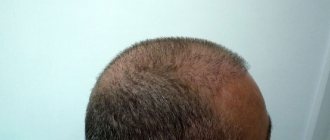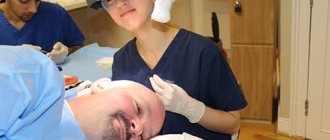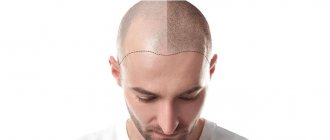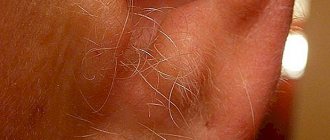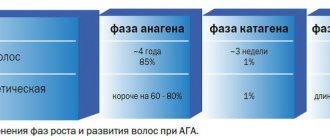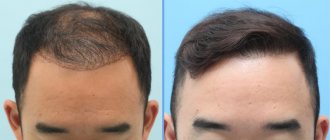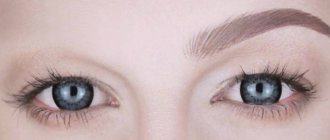If you are unhappy with your hair, there are several options: shave your head (no hair - no problem), get a hairstyle like Lukashenko's, or transplant hair follicles.
This is #offtopic. If you don’t want to read, it’s better to immediately return to the main page of the site.
Important! Below are a few not-so-pleasant photos with anatomical details. If you eat, finish your food before reading further.
Let's understand how hair transplantation works and why people most often go to Turkey for this procedure.
Who even came up with hair transplants?
Japanese surgeon Suji Okuda, a doctor in the Kwantung Army, became interested in the topic in the 1930s. In 1939, his work “Clinical and Experimental Hair Transplantation” was published. Before this, hair was not transplanted; wigs were worn.
Okuda performed more than 200 surgeries on military volunteers. Hair transplants covered scars and burns received during the war.
For hair transplantation, Okuda used a puncher. Miniature, of course - a circular metal trephine with a diameter of 4 mm. Spoiler alert: not much has changed since then.
Grafts for transplantation
Using a puncher, the surgeon drilled out grafts (pieces of skin with hair follicles) from the back of the head, and then inserted them into the right places. But things didn’t work out - politics got in the way. Japan supported Germany in World War II. After Hitler lost the war, the country found itself on the outskirts of civilization.
In the 60s, scientists began to extract one hair at a time to make the transplant result more natural. And only about 15 years ago, surgeons realized that it was more effective to transplant natural microtufts of hair.
Such bundles have a common blood supply channel and a common sebaceous gland. The process is complex and time-consuming, but the result is impressive.
Baldness in men
According to experts, about 85 percent of men suffer from hair loss. Baldness usually begins after age 21. But not all types of hair loss are the same, and more importantly, not all are reversible. It is important to identify and understand the cause: genetics, stress or other factors.
The most common causes of hair loss are: - Androgenetic alopecia - Alopecia areata - Primary cicatricial alopecia - Mechanical (traction) alopecia - Post-burn, post-traumatic and post-operative scars
Androgenetic alopecia is the most common form of hair loss. Male pattern baldness occurs due to a combination of genetics and the male hormone DHT. In this case, hair transplant is the only option for almost 90 percent of balding men in the world.
What methods are used now?
FUE transplant: before and after
All techniques are divided into two groups – seamless ( FUE ) and suture ( FUT, Strip ). Theoretically, there are other experimental methods, but ISHRS (International Society of Hair Restoration Surgery) only recognizes these two.
Both groups have their advantages and disadvantages. The number of FUE and FUT/Strip operations is approximately the same.
Recently, HFE and DHI - improved options for seamless transplantation. The grafts are smaller and the scars are not so visible.
A common drawback of all methods is that before removing the grafts, the hair in this area is shaved off. But if you are already used to shaving to hide your baldness, this is not a problem.
You can do without shaving only if you need to transplant a few follicles. For example, to disguise a scar or make new eyebrows.
If you need to transplant a lot of hair, but you can’t shave, pieces of hair are cut off. But this is not so convenient for the doctor; the effectiveness of the procedure decreases.
The operation itself is not difficult for the patient. You can watch TV, read a book or play. If necessary, you can stop at any time to walk or eat.
Seamless transplant
Seamless hair transplant process
FUE is the extraction (extraction) of follicular units. Groups of 1-4 follicles are called grafts.
Hair transplantation is carried out in three stages:
1. Grafts are drilled out of the skin under local anesthesia with a special tool – a punch. This is a metal handle with a beveled tube with a diameter of 0.5-0.9 mm inside.
2. Channels are made in the bald area. These are shallow cuts and will not need to be sutured.
3. The grafts are placed into the canals using tweezers in a checkerboard pattern. This way it turns out more natural - so that there is no “doll effect”.
How dolls' hair is sewn in: in large bunches along clear lines. Looks unaesthetic
Grafts are obtained manually or mechanically. You can manually cut up to 1.5 thousand grafts (yes, that’s not much!). In total, a person has 90-200 thousand hairs .
Grafts before transplantation
Need more? We'll have to take a microturbine and extract grafts with it. You can extract twice as many follicles.
It’s easier with a turbine - the doctor makes fewer movements and doesn’t get so tired. But the surgeon needs to feel how deep to take the grafts and how quickly.
The turbine rotates at speeds of up to 1 thousand revolutions per minute. The procedure requires serious experience and extreme care.
Advantages of the seamless method:
▪ Almost painless. ▪ Less traumatic. ▪ Punch marks will not be visible even on a shaved head.
Minuses:
▪ Suitable for small bald areas only. ▪ The procedure can last up to 8 hours. Not everyone can handle it. ▪ Up to 6% of follicles are damaged and lost.
Suture transplant
Suture hair transplant scheme
If the baldness is severe, you cannot do without stitches. The doctor will have to take a whole flap of skin and cut it into grafts. There are three main stages:
1. Strips of skin are cut out with a scalpel from the back of the head and divided into grafts.
2. The surgeon closes the edges of the wounds with sutures so that the scars are not so noticeable.
3. After this, the grafts are transplanted to the desired location manually or using an implanter. The surgeon takes into account the direction of hair growth to achieve naturalness.
Typically, the surgeon directly performs the transplantation, and assistants (up to eight people!) separate fresh grafts from the flaps.
Advantages of the suture method:
▪ Up to 5 thousand grafts – up to 12 thousand follicles – can be transplanted at a time. ▪ The operation takes 3-4 hours. ▪ Grafts are easier to remove. ▪ Rejection rate – less than 3%. ▪ Lower price.
Minuses:
▪ Scars from cut flaps of skin. ▪ Headaches due to damaged nerve endings. ▪ Inability to wear short hair.
§3. Hair transplant technology: basic transplantation methods
Various scalp diseases affect the condition of the hair in a negative way - dandruff may appear or even hair loss. Hair transplantation can help with alopecia (hair loss).
Age-related changes, illness or external negative factors can affect the change in hairline. In extreme cases, thinning of the strands or even loss is observed. This leads to bald patches and hairless areas. The parietal and temporal parts of the skull are much more often affected by such lesions. The solution, in this case, will be the technology of hair transplantation from the occipital region to the damaged areas. The thickness of the hair and the area affected by alopecia should be taken into account. Experienced specialists will tell you in which cases the operation will be effective and will not cause harm.
The following transplantation methods are known today:
- Classical. It is possible to transplant hair from areas of the scalp. A piece of skin with hair follicles is cut off from a healthy part of the head, and a similar piece of skin is removed from the damaged area. Next, a natural implant is sewn in. All wounds are sutured, but this is a painful process, followed by a long recovery period. This method is rarely used.
- Follicular (seamless) - hair transplantation that leaves no wounds or stitches. The idea is to extract follicles from healthy areas of the head and transplant them to the affected parts. The doctor performs the operation using a special syringe, so there are no cuts on the skin. The main advantage of this method is the rapid engraftment of hair. However, there are also contraindications. First of all, it is necessary to determine the causes of alopecia. If hair loss occurs unevenly and in different areas of the skin, then there is no need to rush into the follicular restoration method. Hair may continue to fall out from the now weakened part of the scalp (due to the transplanted follicles). First of all, you need to determine the cause of the disease and eliminate it so that the transplant does not become a temporary solution to the problem. People of different ages suffer from androgenetic alopecia, which is negatively affected by radiation, sun, and salt water. A poorly balanced diet also leaves an unfavorable mark. Lack of nutrients in the body affects all organs (including hair loss).
Modern methods of hair transplantation
Let's look at popular hair transplant methods.
Seamless implantation (FUE - Follicular Unit Extraction) is the extraction of part of the follicular groups from the donor area and their transplantation. With this method, there is no need to excise donor flaps from the back of the head. The big advantage is that the transplanted hair is distributed evenly in the problem area.
The procedure does not injure either the implantation zone or the area where donor material is taken. During the procedure, “punchies” of different diameters from 0.75 to 1.0 mm are used. With their help, follicles are taken. The doctor determines a graft consisting of 1, 2, 3 or 4 follicles from the donor area and selects it for implantation.
The grafts are immediately moved into the prepared microholes in the recipient zone. The further recovery and regenerating period passes quickly and with virtually no pain. Basically, grafts take up to 14 days to take root. There are, of course, unpleasant sensations after the procedure, but they are eliminated by taking analgesics. A return to the normal rhythm of life occurs after a week.
The procedure is outpatient and is carried out in several stages:
- Taking material from a donor.
- Creation of holes in the recipient.
- Implantation of grafts to a donor.
Advantages:
- Seamless procedure.
- No scar in the back of the head.
- Hair transplant from another part of the body.
- Accuracy and prudence of grafts of the appropriate structure and content of follicles.
Patchwork - Strip method. The essence is the simultaneous implantation of at least 5,500 grafts or more at one time. The duration of the procedure is on average up to 5 hours. The operation is performed under local anesthesia.
Stages:
- Taking a flap from the donor area;
- Extracting grafts from the selected area of the flap;
- Creation of micro-holes in the skin in the transplant area.
After the procedure, the patient can go home, as there is no need to stay in a hospital.
Implantation of grafts into microholes
Stage I - taking material from the donor. The surgeon removes a flap from the donor area (back of the head or temple). Particularly noteworthy are:
- Skin turgor.
- Hair density.
Stage II - obtaining micrografts. The taken flap is formed into micrografts consisting of 1-3 follicles. Their identification is carried out using special optical microscopes, with multiple magnification of tens of times. This automatically reduces the trauma of the follicles taken and increases the number of grafts taken. The second stage requires precision, accuracy and professionalism from specialists, since this is a very scrupulous and responsible work in order to extract and preserve a living follicle and transfer it to a container with a nutrient medium.
Stage III - creation of channels (holes) in the donor. Along with the preparation of grafts by assistants, the surgeon simultaneously creates channels for further implantation of grafts into the recipient area, taking into account the direction of hair growth.
Stage IV - implantation of micrografts. The grafts are transferred into the holes using special surgical instruments (microtweezers). They minimize trauma to the graft during the procedure.
Transplantation of micrografts containing from 1 to 3 follicular hairs creates naturalness and maintains the density of the implanted hair. Hair begins to grow 5-9 months after the procedure, maintaining all its physical properties: structure, growth rate, color. The density of hair in the transplanted area is formed 12 months after the procedure. These hair transplant methods continue to grow the implanted hair throughout life and do not require special care.
Other hair transplant methods and recovery after surgery
Before the active use of current methods, other surgical methods of hair transplantation were used. The painful area of skin with hair follicles was simply removed, and healthy areas of skin were stitched together. Now this method is practically not used, even for small lesions.
The synthetic hair transplant method has a number of disadvantages. An artificial hair transplant operation is performed: fibers are implanted into the affected area with a special needle. Scarring remains, and many patients have reported itching in the damaged area after surgery. In addition, further hair growth does not occur, and it is prone to loss.
After a hair transplant, grafts (skin strips) use sterile medical tissue to close wounds on the head. Usually the stitches are removed after 2 weeks. Hair engraftment can occur approximately 10 hours after surgery.
You should take a responsible approach to choosing a specialist. His professionalism, experience and qualifications matter, because the result of the transplant depends on him. It may be necessary to repeat several operations to achieve the desired result.
What kind of hair is transplanted?
Only your own hair is transplanted. Hair donation does not exist - foreign follicles do not take root. Theoretically, follicles can only be transplanted from one identical twin to another.
Where do hair transplants come from:
From the head
In 1952, plastic surgeon Norman Orentreich introduced the concept of donor dominance. He proved that hair from the temples and back of the head is the most resistant genetically.
They are resistant to male hormones, the imbalance of which causes androgenetic alopecia. This is what causes 90% of baldness cases.
The hair on the back of the head grows thickly, so that up to 50% of the follicles can be extracted without noticeable marks. This is if you choose a seamless method and drill individual grafts.
If you take flaps, the scars will remain. But often this is the lesser of two evils.
From the body
If there are few follicles on the back of the head, hairs are taken from the body. But they are sensitive to male hormones, and after transplantation they may fall out within 2-3 years.
Chest hair is sometimes transplanted into a beard or eyebrows. On the head - from the beard, they will grow longer than from other areas of the body.
If it is no longer possible to take the required number of follicles from the beard for transplantation onto the head (for example, during a repeat procedure), hair is taken from the groin area. Then the arms, legs, and chest go into action. But only if there are no other options.
This type of hair will not grow too long. Therefore, they are used either to fill in the crown and back of the head, or to create the front hairline.
Is it possible to transplant artificial hair?
Artificial hair next to real
hair. Artificial hair transplantation is performed in exceptional cases. In the USA, such procedures were banned in 1983 due to the high risks - from the development of infections to complete hair loss.
Artificial hair for transplantation is produced, for example, by the Italian Medicap (polymer single hair Biofibre and triple Medicap High Density) and the Japanese Nido. At the end of the hairs there are loops or hooks in a keratin sheath that prevent them from falling out of the skin.
But the effectiveness of such a procedure is much lower than if you work with living hair. The body can reject artificial hair.
Artificial hair cannot be dyed or curled, or used with a curling iron or iron. If you cut them short, it's gone forever. You also need to comb your hair very carefully.
Types of grafts
In order to flawlessly cope with hair transplantation, you need to understand what 1 graft is and be able to calculate their exact number required to achieve the optimal result. To do this, take into account the density of the transplanted hair in the donor area and the size of the natural grafts.
Giphy
You already know what one graft is: a small area of the dermis of the scalp on which from one to four hairs can grow. The area of the “shred” is no less than 0.8 mm and no more than 3.5 mm. But the graft is not a constant value. Think for yourself, how many types of hair are there in the world? So many grafts! The number of follicles at a skin locus depends on:
- density of the donor area;
- pigment in hair;
- thickness of the rods.
The number of grafts planned to be transplanted into the bald area also depends on a number of parameters:
- the density of natural hair, which determines the uniformity of the visual effect after transplantation;
- curl tones;
- thickness of transplanted rods;
- alopecia area;
- desired design after transplantation.
Obviously, even on a minimum 0.8 mm of skin, either one hair or as many as 4 can form! That is, the types of grafts are constantly changing. At the same time, from 20 to 80 grafts can be located on an area of 1 square centimeter. If their density reaches a maximum of 40 units, they speak of normal transplantation density. If more, we are talking about high-density hair transplantation.
The type of graft determines the amount of hair transplanted to the alopecia area, but never corresponds to its original volume. This is important and can be explained quite simply; it is worth remembering what a graft is. After all, it always stimulates the growth of more rods than it initially contains. Experts insist that more than 2,000 grafts cannot be transplanted. Since this amount gives further growth of at least 3.5 thousand hairs. Maximum – 7,000 (depending on the type of locus being transplanted).
Hair transplant can be done anywhere
Sideburns, mustaches, eyebrows, breasts - the doctor doesn’t care where to transplant the follicles. So if you want a shaved skull and a beard like a lumberjack, this is not a problem.
And when the fashion changes, replant it back. Joke.
Women are increasingly transplanting eyebrow hair (hello, Cara Delevingne!). The difficulty is that the hairs here grow at a large angle, so only an experienced doctor can do the job efficiently.
The procedure lasts 2-3 hours. Taking care of your new eyebrows is easy, but you will have to trim the hairs regularly.
Impeccable aesthetics and individual approach
Another feature of the Platinental transplantation technique is the emphasis on the aesthetics of the transplanted hair.
Firstly, the doctor plants under multiple magnification evenly between the existing hair
It is very important! Some specialists plant new hair almost next to the growing one or even on top of it, damaging their own hairline. So, by mixing hair of your own growth and planted hair, we get an excellent and very natural result.
So, by mixing hair from your own growth and planted hair, you get an excellent and very natural result.
Secondly, look at what hair grows on your temples, on the back of your head, around your ears. They are thin and delicate.
We pay great attention to the formation of the hair growth boundary and imitate natural hair as accurately as possible, planting only single grafts and thin hair in this area. This is how we achieve the most natural transition.. Thirdly, we strictly adhere to the direction of hair growth
For example, if the hair on the top of the head grows in a spiral, then new hair will be implanted in a spiral and at the same angle.
Thirdly, we strictly adhere to the direction of hair growth. For example, if the hair on the top of the head grows in a spiral, then new hair will be implanted in a spiral and at the same angle.
How much hair will survive
On average, up to 95% of follicles survive. But everything very much depends on the qualifications of the doctor and the patient’s condition.
After a couple of weeks, some of the transplanted hair will fall out. But this is a natural update. The main thing is that the follicles will remain in place.
In general, a 100% guarantee on all follicles is a myth. Firstly, 3-6% of follicles will be lost before transplantation. Secondly, no one will count the transplanted hairs.
With artificial hair everything is sadder. About 10-20% of hairs fall out every year. You will have to adjust your hairstyle every 2-4 years.
Effect and how long the result lasts
The success of the procedure and its aesthetic result depends on the amount of hair growing in the donor area, its color, thickness, and waviness. After transplantation, new hair will begin to grow after 2-3 months, gradually progressing. The final result can be assessed after 12 months. During this time, the hair completely grows back. Their growth will continue in accordance with the physiological cycle throughout the rest of their lives. Since the transplanted hair retains its full properties and does not fall out, it can be cut, styled and dyed. Repeated hair transplantation in the same area can be performed after 8 months, in another area - after 3 months.
Using the Fouet technique allows the patient who has undergone hair follicle transplantation to return to normal life on the second day. Being a minimally invasive and therefore minimally traumatic method, it leaves no traces in the form of scars and does not require sutures or wearing a bandage, or long and complex rehabilitation. Thanks to this method, the patient will be able to wear a haircut of any length.
What to do after the procedure
One day after hair transplantation
Even after suture hair transplantation, you can return to work the next day. After three days you will be allowed to wash your hair, after a week you will be allowed to go to the gym or do other physical activity.
The traces of seamless transplantation disappear faster. But still, in the first days you should not overexert yourself, go out in the sun without a cap or visit the sauna.
Before and after trichopigmentation
If scars bother you, you can do tricopigmentation - tattoo the missing follicles. It doesn't hurt too much.
Hair from new follicles will begin to grow within two months. At first they will be curly and unruly, but after a few haircuts this will go away.
The final result is assessed one year after the procedure. If the hair is not thick enough (normally 80-120 hairs grow per 1 square cm, up to 50 are transplanted), the procedure can be repeated.
Contraindications
The transplantation procedure is carried out after consultation and examination by a trichologist, then by a transplantologist, and tests. If necessary, the patient may be prescribed additional examination to more accurately determine his condition and identify contraindications. Transplantation can be performed on men and women of any age if they have signs of alopecia.
Hair transplantation using this method is prohibited if the patient:
- individual allergic reaction to local anesthesia;
- exacerbation of skin diseases on the head;
- hypertension;
- hemophilia, other blood clotting problems;
- diabetes;
- mental problems.
Why does everyone go to Turkey for new hair?
There are more clinics in Turkey and prices are lower. In Istanbul alone there are several dozen hair transplant centers.
Many of these centers have been operating for 20 years. Up to a dozen transplants are made per day in the center of the middle arm. Up to 60 thousand people come for the procedure annually .
But there are no queues. You can come any day, having previously called the clinic, and leave with new hair. At the same time, relax and see the sights.
Finally, many Turkish clinics include in the cost of the procedure several days of accommodation in a 4-5* hotel, transfers from the airport, tests, medications, skincare products, etc.
How much does it cost
In the Russian Federation, the average price for a hair transplant on the head is 2 dollars per graft for the first thousand grafts and 1 dollar for all subsequent ones. Eyebrows, beards and mustaches are more expensive – up to 3-4 dollars per graft. But here the area is smaller.
Diagnostics, ward, medications - everything is paid separately. As a result, a round sum accumulates - from 3 thousand dollars . And in Europe and the USA it costs 10-20 thousand dollars.
In Turkey – 1.5-2 times cheaper. Turnkey hair can be done for 1.5-2 thousand dollars . This includes accommodation, meals, etc.
Synthetic hair will cost more. One hair (not a graft of 1-4 follicles) costs 2.5-3 dollars. Procedure for 1.5 thousand hairs – up to 4.5 thousand dollars . And in 2-4 years it will have to be repeated, albeit on a smaller scale.
What else do you need to know?
In order to compete with each other, some Turkish clinics are forced to save on specialists. As a result, the patient is advised by an experienced doctor, and the transplant is performed by nurses. The doctor intervenes only as a last resort.
There is also a black market for hair transplants. These are illegal clinics that lure in with beautiful websites and low prices. But in the end, at best, you will have to repeat the procedure. At worst, they can cause blood poisoning.
To be sure of the result, you need to contact a clinic that has membership in ISHRS. This is the International Society of Hair Restoration Surgery, a world-class association.
Total
Seamless transplantation (FUE, HFE, DHI) is less traumatic. Up to 1.5 thousand grafts can be transplanted at a time. The procedure lasts 8 hours. There will be no scars after it. Suitable for slight baldness. Rehabilitation takes 2-3 days.
Suture transfer (FUT, Strip) is when flaps of skin with hairs are cut out and then the edges of the wounds are sutured, leaving strips of scars. Up to 5 thousand grafts are transplanted at a time, the procedure takes 3-4 hours. Will help hide severe baldness. Rehabilitation lasts up to a week.
with artificial hair . It's expensive ($4.5 thousand). After 2-4 years, the transplant will have to be repeated, because the artificial hairs fall out more quickly. You will have to forget about frequent haircuts - artificial hair does not grow. Rehabilitation – 2-3 days.
Possible complications
Compliance with the above recommendations will help avoid complications. Redness of the skin, pimples and itching that appear immediately after the procedure are considered normal, since the follicular compounds “in the new place of residence” begin to become active, take root, and lymph flow is restored. After 2 weeks, these phenomena usually disappear.
During the first night, patients may experience discomfort due to inability to sleep, which may be caused by psychological stress. Sleep is completely normalized on the 5th day after the transplant.
Illiterate operation, associated with errors or inexperience of the doctor, as well as violation of sterility or postoperative recovery conditions, can lead to unpleasant complications:
- the appearance of visible scars and cicatrices on the skin, swelling on the face;
- reducing skin sensitivity at transplant sites;
- rejection of the transplanted material if synthetic or foreign hair was used.
Bonus: an example of transplantation in action
The founder of VKontakte and Telegram, Pavel Durov, suffered from baldness at the beginning of his career:
And when he made money on his projects, he began to look completely different. Compare:
It not only added thickness, but also changed the hairline - got rid of bald spots.
Elon Musk also went through this procedure. The company often jokes that the best remedy for combating baldness is $2-3 billion.
The hair of journalist and TV presenter Sergei Brilev has also changed a lot. Before:
And after:
(
43 votes, overall rating: 4.79 out of 5)
